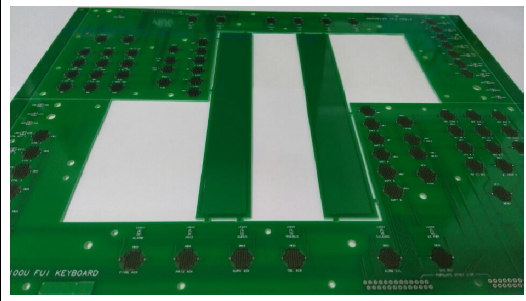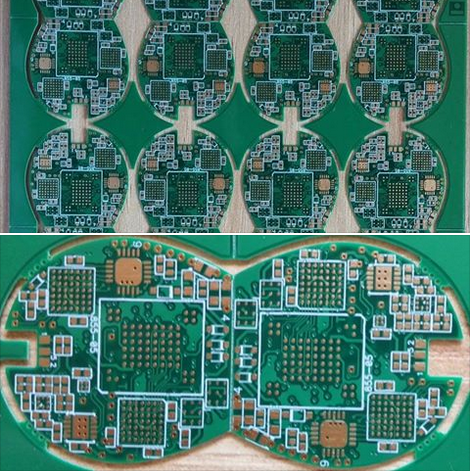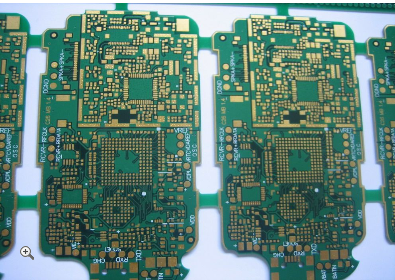-
 Agriculture
Agriculture
-
 Health-Care
Health-Care
-
 Environment
Environment
-
 Construction-Real-Estate
Construction-Real-Estate
-
 Tools-Hardware
Tools-Hardware
-
 Home-Garden
Home-Garden
-
 Furniture
Furniture
-
 Luggage-Bags-Cases
Luggage-Bags-Cases
-
 Medical-devices-Supplies
Medical-devices-Supplies
-
 Gifts-Crafts
Gifts-Crafts
-
 Sports-Entertainment
Sports-Entertainment
-
 Food-Beverage
Food-Beverage
-
 Vehicles-Transportation
Vehicles-Transportation
-
 Power-Transmission
Power-Transmission
-
 Material-Handling
Material-Handling
-
 Renewable-Energy
Renewable-Energy
-
 Safety
Safety
-
 Testing-Instrument-Equipment
Testing-Instrument-Equipment
-
 Construction-Building-Machinery
Construction-Building-Machinery
-
 Pet-Supplies
Pet-Supplies
-
 Personal-Care-Household-Cleaning
Personal-Care-Household-Cleaning
-
 Vehicle-Accessories-Electronics-Tools
Vehicle-Accessories-Electronics-Tools
-
 School-Office-Supplies
School-Office-Supplies
-
 Packaging-Printing
Packaging-Printing
-
 Mother-Kids-Toys
Mother-Kids-Toys
-
 Business-Services
Business-Services
-
 Commercial-Equipment-Machinery
Commercial-Equipment-Machinery
-
 Apparel-Accessories
Apparel-Accessories
-
 Security
Security
-
 Shoes-Accessories
Shoes-Accessories
-
 Vehicle-Parts-Accessories
Vehicle-Parts-Accessories
-
 Jewelry-Eyewear-Watches-Accessories
Jewelry-Eyewear-Watches-Accessories
-
 Lights-Lighting
Lights-Lighting
-
 Fabric-Textile-Raw-Material
Fabric-Textile-Raw-Material
-
 Fabrication-Services
Fabrication-Services
-
 Industrial-Machinery
Industrial-Machinery
-
 Consumer-Electronics
Consumer-Electronics
-
 Electrical-Equipment-Supplies
Electrical-Equipment-Supplies
-
 Electronic-Components-Accessories-Telecommunications
Electronic-Components-Accessories-Telecommunications
-
 Home-Appliances
Home-Appliances
-
 Beauty
Beauty
-
 Chemicals
Chemicals
-
 Rubber-Plastics
Rubber-Plastics
-
 Metals-Alloys
Metals-Alloys
- Masonry Materials
- Curtain Walls & Accessories
- Earthwork Products
- Fireproofing Materials
- Heat Insulation Materials
- Plastic Building Materials
- Building Boards
- Soundproofing Materials
- Timber
- Waterproofing Materials
- Balustrades & Handrails
- Bathroom & Kitchen
- Flooring & Accessories
- Tiles & Accessories
- Door, Window & Accessories
- Fireplaces & Stoves
- Floor Heating Systems & Parts
- Stairs & Stair Parts
- Ceilings
- Elevators & Escalators
- Stone
- Countertops, Vanity Tops & Table Tops
- Mosaics
- Metal Building Materials
- Multifunctional Materials
- Ladders & Scaffoldings
- Mouldings
- Corner Guards
- Decorative Films
- Formwork
- Building & Industrial Glass
- Other Construction & Real Estate
- Wallpapers/Wall panels
- HVAC System & Parts
- Outdoor Facilities
- Prefabricated Buildings
- Festive & Party Supplies
- Bathroom Products
- Household Sundries
- Rain Gear
- Garden Supplies
- Household Cleaning Tools & Accessories
- Lighters & Smoking Accessories
- Home Storage & Organization
- Household Scales
- Smart Home Improvement
- Home Textiles
- Kitchenware
- Drinkware & Accessories
- Dinnerware, Coffee & Wine
- Home Decor
- Golf
- Fitness & Body Building
- Amusement Park Facilities
- Billiards, Board Game,Coin Operated Games
- Musical Instruments
- Outdoor Affordable Luxury Sports
- Camping & Hiking
- Fishing
- Sports Safety&Rehabilitation
- Ball Sports Equipments
- Water Sports
- Winter Sports
- Luxury Travel Equipments
- Sports Shoes, Bags & Accessories
- Cycling
- Other Sports & Entertainment Products
- Artificial Grass&Sports Flooring&Sports Court Equipment
- Scooters
- Food Ingredients
- Honey & Honey Products
- Snacks
- Nuts & Kernels
- Seafood
- Plant & Animal Oil
- Beverages
- Fruit & Vegetable Products
- Frog & Escargot
- Bean Products
- Egg Products
- Dairy Products
- Seasonings & Condiments
- Canned Food
- Instant Food
- Baked Goods
- Other Food & Beverage
- Meat & Poultry
- Confectionery
- Grain Products
- Feminie Care
- Hair Care & Styling
- Body Care
- Hands & Feet Care
- Hygiene Products
- Men's Grooming
- Laundry Cleaning Supplies
- Travel Size & Gift Sets
- Room Deodorizers
- Other Personal Care Products
- Pest Control Products
- Special Household Cleaning
- Floor Cleaning
- Kitchen & Bathroom Cleaning
- Oral Care
- Bath Supplies
- Yellow Pages
- Correction Supplies
- Office Binding Supplies
- Office Cutting Supplies
- Board Erasers
- Office Adhesives & Tapes
- Education Supplies
- Pencil Cases & Bags
- Notebooks & Writing Pads
- File Folder Accessories
- Calendars
- Writing Accessories
- Commercial Office Supplies
- Pencil Sharpeners
- Pens
- Letter Pad/Paper
- Paper Envelopes
- Desk Organizers
- Pencils
- Markers & Highlighters
- Filing Products
- Art Supplies
- Easels
- Badge Holder & Accessories
- Office Paper
- Printer Supplies
- Book Covers
- Other Office & School Supplies
- Stationery Set
- Boards
- Clipboards
- Stamps
- Drafting Supplies
- Stencils
- Electronic Dictionary
- Books
- Map
- Magazines
- Calculators
- Baby & Toddler Toys
- Educational Toys
- Classic Toys
- Dress Up & Pretend Play
- Toy Vehicle
- Stuffed Animals & Plush Toys
- Outdoor Toys & Structures
- Balloons & Accessories
- Baby Food
- Children's Clothing
- Baby Supplies & Products
- Maternity Clothes
- Kids Shoes
- Baby Care
- Novelty & Gag Toys
- Dolls & Accessories
- Puzzle & Games
- Blocks & Model Building Toys
- Toddler Clothing
- Baby Clothing
- Kids' Luggage & Bags
- Arts, Crafts & DIY Toys
- Action & Toy Figures
- Baby Appliances
- Hobbies & Models
- Remote Control Toys
- Promotional Toys
- Pregnancy & Maternity
- Hygiene Products
- Kid's Textile&Bedding
- Novelty & Special Use
- Toy Weapons
- Baby Gifts
- Baby Storage & Organization
- Auto Drive Systems
- ATV/UTV Parts & Accessories
- Marine Parts & Accessories
- Other Auto Parts
- Trailer Parts & Accessories
- Auto Transmission Systems
- Train Parts & Accessories
- Universal Parts
- Railway Parts & Accessories
- Auto Brake Systems
- Aviation Parts & Accessories
- Truck Parts & Accessories
- Auto Suspension Systems
- Auto Lighting Systems
- New Energy Vehicle Parts & Accessories
- Auto Steering Systems
- Wheels, Tires & Accessories
- Bus Parts & Accessories
- Auto Performance Parts
- Cooling System
- Go-Kart & Kart Racer Parts & Accessories
- Air Conditioning Systems
- Heavy Duty Vehicle Parts & Accessories
- Auto Electrical Systems
- Auto Body Systems
- Auto Engine Systems
- Container Parts & Accessories
- Motorcycle Parts & Accessories
- Refrigeration & Heat Exchange Equipment
- Machine Tool Equipment
- Food & Beverage Machinery
- Agricultural Machinery & Equipment
- Apparel & Textile Machinery
- Chemical Machinery
- Packaging Machines
- Paper Production Machinery
- Plastic & Rubber Processing Machinery
- Industrial Robots
- Electronic Products Machinery
- Metal & Metallurgy Machinery
- Woodworking Machinery
- Home Product Manufacturing Machinery
- Machinery Accessories
- Environmental Machinery
- Machinery Service
- Electrical Equipment Manufacturing Machinery
- Industrial Compressors & Parts
- Tobacco & Cigarette Machinery
- Production Line
- Used Industrial Machinery
- Electronics Production Machinery
- Other Machinery & Industrial Equipment
- Camera, Photo & Accessories
- Portable Audio, Video & Accessories
- Television, Home Audio, Video & Accessories
- Video Games & Accessories
- Mobile Phone & Accessories
- Electronic Publications
- Earphone & Headphone & Accessories
- Speakers & Accessories
- Smart Electronics
- TV Receivers & Accessories
- Mobile Phone & Computer Repair Parts
- Chargers, Batteries & Power Supplies
- Used Electronics
- VR, AR, MR Hardware & Software
- Projectors & Presentation Equipments
- Other Consumer Electronics
- Cables & Commonly Used Accessories
- Computer Hardware & Software
- Displays, Signage and Optoelectronics
- Discrete Semiconductors
- Wireless & IoT Module and Products
- Telecommunications
- Connectors, Terminals & Accessories
- Development Boards, Electronic Modules and Kits
- Circuit Protection
- Sensors
- Isolators
- Audio Components and Products
- Integrated Circuits
- Power Supplies
- Relays
- RF, Microwave and RFID
- Electronic Accessories & Supplies
- Passive Components
- PCB & PCBA
- Air Quality Appliances
- Home Appliance Parts
- Heating & Cooling Appliances
- Small Kitchen Appliances
- Laundry Appliances
- Water Heaters
- Water Treatment Appliances
- Refrigerators & Freezers
- Personal Care & Beauty Appliances
- Major Kitchen Appliances
- Cleaning Appliances
- Second-hand Appliances
- Smart Home Appliances
- Other Home Appliances
- Energy Chemicals
- Inorganic Chemicals
- Basic Organic Chemicals
- Agrochemicals
- Admixture & Additives
- Catalysts & Chemical Auxiliary Agents
- Pigments & Dyestuff
- Coating & Paint
- Daily Chemicals
- Polymer
- Organic Intermediate
- Adhesives & Sealants
- Chemical Waste
- Biological Chemical Products
- Surface Treatment Chemicals
- Painting & Coating
- Chemical Reagents
- Flavor & Fragrance
- Non-Explosive Demolition Agents
- Other Chemicals
- Custom Chemical Services
Innovative Heat Sink Technology For Single Layer Copper Substrate PCB
In the rapidly evolving world of electronics, thermal management remains a critical challenge, especially as devices become more compact and powerful. Single layer copper substrate PCBs are widely used in applications ranging from consumer electronics to automotive systems due to their cost-effectiveness and simplicity. However, their limited ability to dissipate heat can lead to overheating, reduced performance, and shortened lifespan. This is where innovative heat sink technology comes into play, offering groundbreaking solutions to enhance thermal efficiency without compromising design integrity. By integrating advanced materials and novel designs, these innovations are set to revolutionize how we manage heat in everyday electronics, making devices more reliable and efficient. The background of this technology stems from decades of research in thermal dynamics and material science, aiming to address the persistent issue of heat accumulation in compact circuits.
Advanced Thermal Interface Materials
One of the key aspects of innovative heat sink technology for single layer copper substrate PCBs is the use of advanced thermal interface materials (TIMs). Traditional TIMs, such as thermal greases or pads, often suffer from issues like pump-out, degradation over time, or inadequate thermal conductivity. Newer materials, including graphene-enhanced compounds, liquid metal alloys, and phase change materials, offer superior thermal conductivity, often exceeding 10 W/mK, compared to the 1-5 W/mK range of conventional options. These materials ensure minimal thermal resistance between the heat source and the heat sink, facilitating efficient heat transfer away from critical components.
Moreover, these advanced TIMs are designed to be more durable and stable under varying thermal cycles, which is crucial for applications in harsh environments like automotive or industrial systems. For instance, graphene-based TIMs not only provide excellent heat dissipation but also add mechanical strength to the interface. The integration of such materials into single layer copper substrate PCBs allows for thinner and more efficient designs, reducing the overall footprint while maintaining high thermal performance. This innovation is particularly beneficial for high-power density devices, where every degree Celsius reduction can significantly enhance reliability and longevity.
Microfins and Enhanced Surface Designs
Another groundbreaking approach in heat sink technology involves the implementation of microfins and enhanced surface designs on the copper substrate itself. Unlike traditional bulky heat sinks, these micro-scale structures increase the surface area for heat dissipation without adding significant volume. Through techniques such as etching, machining, or additive manufacturing, intricate patterns of microfins can be directly incorporated into the copper layer of the PCB. This allows for more efficient convection and radiation of heat, leveraging the natural properties of copper while optimizing airflow in compact spaces.
These designs are often customized based on computational fluid dynamics (CFD) simulations to maximize thermal performance for specific applications. For example, in LED lighting or power converters, where space is at a premium, microfins can be tailored to align with airflow paths, reducing thermal resistance by up to 30% compared to flat surfaces. Additionally, the use of porous copper structures or nanostructured coatings can further enhance heat transfer by promoting turbulent flow and increasing emissivity. This level of customization not only improves cooling efficiency but also contributes to energy savings and reduced need for active cooling systems, making it an eco-friendly innovation.
Integration of Active and Passive Cooling Hybrids
Innovative heat sink technology also explores the synergy between active and passive cooling methods tailored for single layer copper substrate PCBs. Passive cooling, relying solely on natural convection and radiation, is often insufficient for high-power applications. By integrating miniature active elements such as piezoelectric fans, thermoelectric coolers (TECs), or microfluidic channels directly into the PCB design, heat dissipation can be significantly enhanced. These hybrids leverage the copper substrate's conductivity to distribute heat evenly, while active components provide targeted cooling where it's needed most.
For instance, piezoelectric fans, which are low-power and silent, can be embedded near hot spots to increase airflow over the copper surface, reducing temperatures by 10-15°C in tests. Similarly, microfluidic channels allow for the circulation of coolants, exploiting the high thermal capacity of liquids for more efficient heat removal. This combination is especially valuable in applications like 5G infrastructure or electric vehicles, where thermal loads are high and reliability is paramount. By merging these approaches, designers can achieve optimal thermal management without resorting to large, cumbersome heat sinks, thus preserving the simplicity and cost advantages of single layer copper substrate PCBs.
Sustainability and Cost-Efficiency
Beyond performance, innovative heat sink technologies emphasize sustainability and cost-efficiency, which are critical for mass adoption. Traditional heat management solutions often involve additional materials like aluminum heat sinks or complex multi-layer PCBs, increasing both cost and environmental impact. The new approaches focus on enhancing the innate properties of single layer copper substrate PCBs, reducing the need for extra components. For example, by improving thermal conductivity through material innovations or surface modifications, manufacturers can avoid over-engineering and minimize waste.
Furthermore, these technologies often utilize recyclable or eco-friendly materials, such as bio-based TIMs or copper alloys with lower energy footprints in production. Lifecycle analyses show that such innovations can reduce carbon emissions by up to 20% in electronic device manufacturing. Cost-wise, the simplicity of integrating these solutions into existing PCB fabrication processes means lower assembly costs and higher scalability. This makes innovative heat sink technology not only a technical advancement but also a economically viable and sustainable choice for the future of electronics.
REPORT
































































































































































































































































































































































































































































































































































































